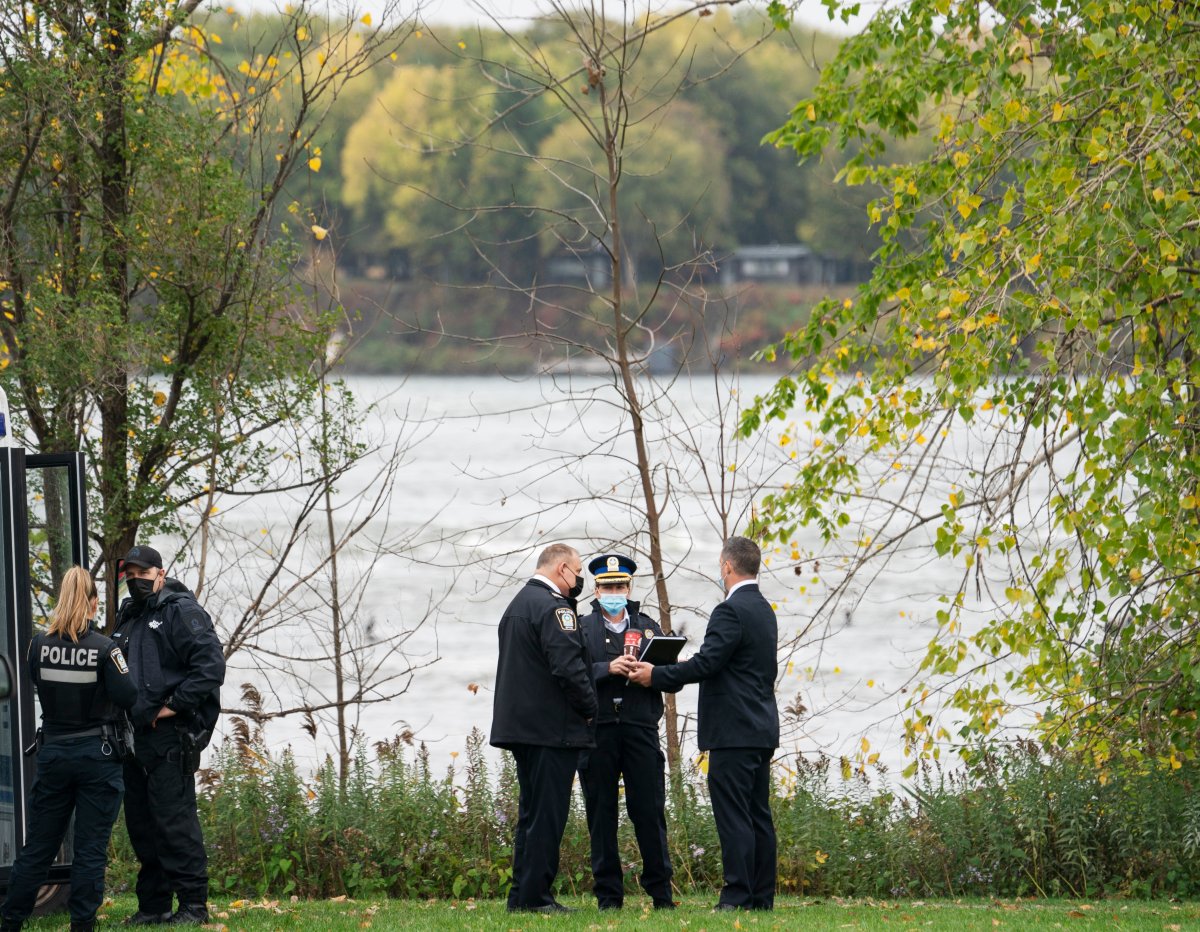The stretch of the St. Lawrence River where a Montreal firefighter died during a rescue last week has been known for centuries as one of the city’s most treacherous.

Today, the Lachine Rapids are mostly an attraction for surfers, sport kayakers and riverside picnickers, but the death of 58-year-old Pierre Lacroix is a reminder that Montreal owes its very existence to their dangerous nature.
Lacroix was one of four firefighters who were on a boat that capsized last Sunday night while trying to help a couple in another boat in distress. While the others were all rescued, Lacroix died after becoming trapped under the boat.
Louise Desrosiers, a spokeswoman for the Montreal fire department, said rescue boats typically avoid venturing into the fast-moving current of the rapids.
“It’s a sector that’s dangerous, so boats will go upstream to save people or downstream to recuperate people who have passed through the rapids,” she said in a phone interview.

Get daily National news
READ MORE: Montreal firefighter dies after rescue boat capsizes in St. Lawrence River
Desrosiers says eight fire stations have nautical rescue units, all staffed by specially trained employees. Calls for help are initially categorized as either “engine trouble” or the more serious “maritime emergency,” which usually happens when someone is in the water or in immediate danger.
While the boaters in the incident involving Lacroix had first reported an engine stall, Desrosiers said she couldn’t confirm how the call had been categorized. An investigation into his death remains ongoing.

Michel Martin, a prevention officer with the Canadian Coast Guard Auxiliary, describes the rapids as “unforgiving” and “a trap.”
Since he began with the service in 2014, he said he’s seen more and more boaters, paddle boarders and fishermen out on the water — some of them inexperienced or unaware when they first start getting caught in the current.
He said the auxiliary coast boats, like the fire rescue, don’t venture into the rapids because the boats aren’t designed for the conditions he describes as rocky and unpredictable, with fast-moving water that varies from a third of a metre to three metres deep.
“We’ll do everything to help people in distress, but not at the expense of the life of our members,” he said in a phone interview.
Lacroix is far from the first person to lose his life in the dangerous waters of the rapids. For better or worse, the rushing waters have shaped the city’s existence from its earliest days, according to historian Denis Gravel.
“Montreal wouldn’t be Montreal without the rapids,” said Gravel, who specializes in municipal history.
While the island was long used as a meeting and fishing place for Indigenous people, it served as a roadblock for European explorers including Jacques Cartier and Samuel de Champlain, who stopped after learning their ships could not proceed further upriver.
Until the Lachine Canal opened in 1825 to bypass the rapids, goods heading toward the Great Lakes had to be unloaded in the Montreal area or portaged _ leading to the city developing as an area of trade and settlement.
“From the beginning of European settlement, there are ”many, many stories of shipwrecks and danger, of people who drowned or went fishing and didn’t pay attention,“ Gravel said.
One of the earliest reported incidents involved an associate of Champlain’s who headed to a nearby island along with two Indigenous men. Their boat, laden with birds, capsized on the way back, and two of the three drowned.
While the rapids were nearly impassable heading west, boats would still try to run the rapids the other way. Some were rafts laden with goods and steered by specialist pilots who, despite their skill, sometimes lost their cargo to the current. Later, steamboats carried tourists looking for a thrill.
In 1873 one such boat, the Louis Renaud, crashed in the rapids, reportedly avoiding tragedy thanks to the Mohawks from nearby Kahnawake who came to the passengers’ aid.
There have been other incidents in more recent years. A fisherman died after losing his footing in 2010, and a surfer died after falling at a popular surfing locale dubbed the standing wave in 2013. This summer, a man disappeared after falling off a boat.
The number of rescues in Montreal’s waters appears to be rising, although mishaps at the rapids have remained stable. The Montreal fire department has seen a 30 per cent increase in the overall number of nautical incidents since 2019 — something Desrosiers says could be attributable to the rising popularity of outdoor sports during the COVID-19 pandemic.
Desrosiers says it’s important for boaters, especially less experienced ones, to remember the St. Lawrence’s strong currents make it challenging to navigate. She said it’s also crucial for boaters to familiarize themselves with their vessels and the places where they’re boating, to avoid drugs and alcohol and to wear a properly-fitted life-jacket.









Comments